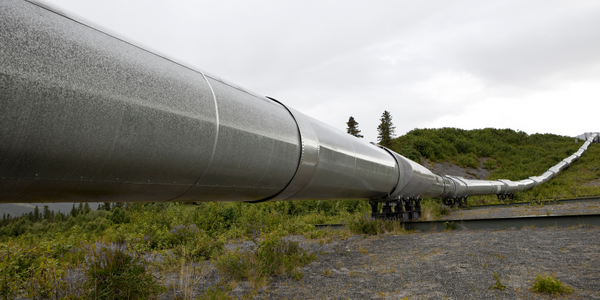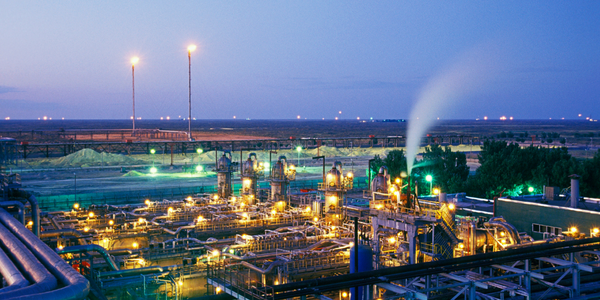公司规模
Large Corporate
地区
- America
国家
- United States
产品
- Denodo Platform
- DI Classic
- DI Desktop
- Production Workspace application
- Royalty-info
技术栈
- Data Virtualization
- RESTful web services
- JDBC
- ETL
实施规模
- Enterprise-wide Deployment
影响指标
- Productivity Improvements
- Cost Savings
技术
- 平台即服务 (PaaS) - 数据管理平台
- 分析与建模 - 数据即服务
适用行业
- 石油和天然气
适用功能
- 产品研发
- 商业运营
用例
- 预测性维护
- 供应链可见性(SCV)
- 质量预测分析
服务
- 数据科学服务
- 系统集成
关于客户
Enverus is the leading SaaS and data analytics company for energy exploration decision support, helping the oil and gas industry achieve better, faster results. The company’s predictive decision platform combines intelligence, analytics, tools, and services in one seamless system to deliver value at every stage of the E&P process. Enverus services more than 3,200 companies globally from its Austin, Texas-based headquarters, and has more than 500 employees on five continents. Enverus’s primary goal is to enable key O&G market segments with information that drives business intelligence in these functions: decide where/how to drill and produce wells to generate the highest return (E&P companies); decide where and in whom to invest equity and debt financing (financial markets and M&A); and decide the highest potential business development opportunities (oil field services). To help drive these decisions, Enverus collects data from various sources and packages them up for sale to their customers.
挑战
Enverus’s business growth drove the need for the company to build next generation products to support key O&G market segments. These products include applications to support well production and oil field services workflows, geo services for map analysis, a Geology, Geophysical and Engineering (GG&E) platform for interpretations and visualization, as well as a soon to be released mineral interest analysis application. Rapid time-to-market for these products and applications was crucial and this implied that the Data Tech team needed to deliver a data platform that supported the internal application development team quicker than they had been doing in the past. Also, rapid delivery of data directly to the customers was needed as well. However, the Data Tech team was challenged with integrating the data across the data warehouse, other data sources and providing it to the data consumers quickly. The product development team’s delivery timelines were routinely at risk due to data availability and data consistency issues. As a result, the developers were directly accessing the data sources and in other cases suffering from severe delivery delays. To solve this issue, one option was to use conventional ETL (extract, transform, and load), but that would take several weeks. A more timely way of meeting the needs of the product development team was needed.
解决方案
Due to strength of the Denodo Platform to rapidly expose underlying data from source systems as data services, Enverus decided to use the solution to manage and quickly provision all of the data to the product development team and its customers. Enverus ETLs the regulatory agencies data into an internal data store that powers the DI Classic product. The production data is stored in another system called DI Desktop. The data from DI Classic, DI Desktop, as well as geo-spatial and Optical Character Recognition (OCR) data stored in other systems are then ETLd into their data warehouse. Enverus has created a virtual data abstraction layer using the Denodo Platform above the DI Classic, DI Desktop, and data warehouse. The Denodo Platform connects to these data sources, combines the data and publishes the resultant virtual views as data services, which are consumed internally by the application development team, analytics and decision support applications, and application data marts, as well as externally by their customers. Enverus uses Denodo’s caching mechanism to store data about business entities such as wells, completions, producing entities, permits, and so on, which are exposed as data services, analytics services, and map services. These services are then used by their internal application developers as well as customers to build applications.
运营影响
数量效益

Case Study missing?
Start adding your own!
Register with your work email and create a new case study profile for your business.
相关案例.

Case Study
Taking Oil and Gas Exploration to the Next Level
DownUnder GeoSolutions (DUG) wanted to increase computing performance by 5 to 10 times to improve seismic processing. The solution must build on current architecture software investments without sacrificing existing software and scale computing without scaling IT infrastructure costs.

Case Study
Remote Wellhead Monitoring
Each wellhead was equipped with various sensors and meters that needed to be monitored and controlled from a central HMI, often miles away from the assets in the field. Redundant solar and wind generators were installed at each wellhead to support the electrical needs of the pumpstations, temperature meters, cameras, and cellular modules. In addition to asset management and remote control capabilities, data logging for remote surveillance and alarm notifications was a key demand from the customer. Terra Ferma’s solution needed to be power efficient, reliable, and capable of supporting high-bandwidth data-feeds. They needed a multi-link cellular connection to a central server that sustained reliable and redundant monitoring and control of flow meters, temperature sensors, power supply, and event-logging; including video and image files. This open-standard network needed to interface with the existing SCADA and proprietary network management software.

Case Study
Refinery Saves Over $700,000 with Smart Wireless
One of the largest petroleum refineries in the world is equipped to refine various types of crude oil and manufacture various grades of fuel from motor gasoline to Aviation Turbine Fuel. Due to wear and tear, eight hydrogen valves in each refinery were leaking, and each cost $1800 per ton of hydrogen vented. The plant also had leakage on nearly 30 flare control hydrocarbon valves. The refinery wanted a continuous, online monitoring system that could catch leaks early, minimize hydrogen and hydrocarbon production losses, and improve safety for maintenance.










